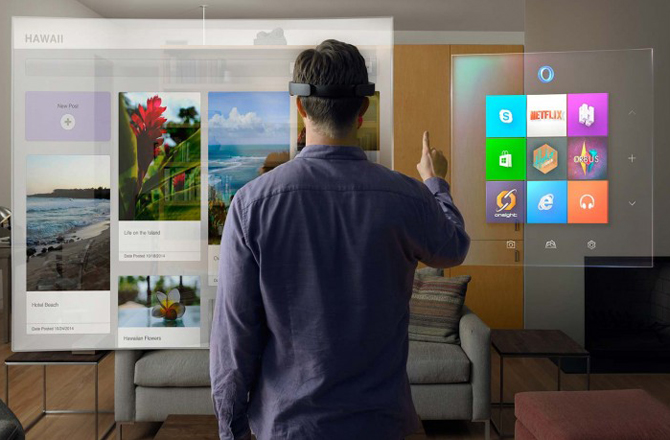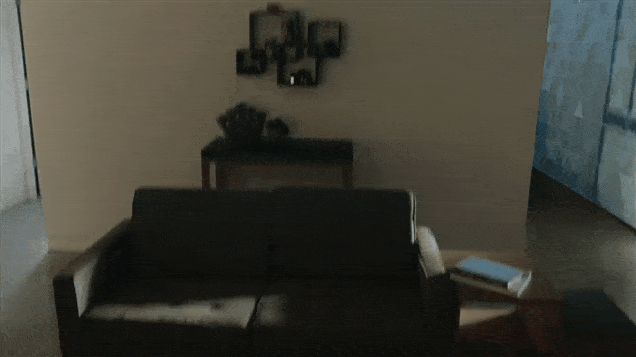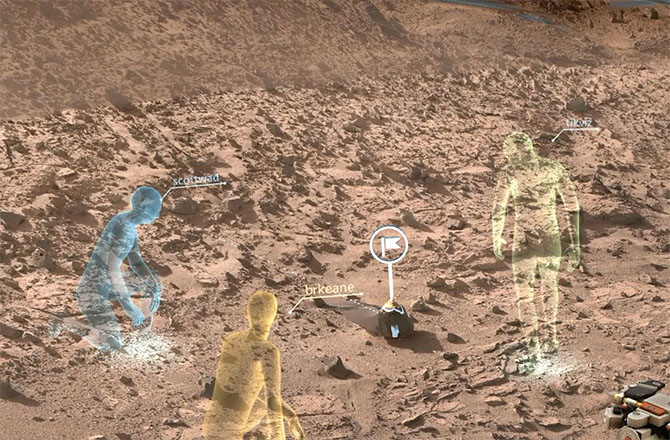Perhaps the biggest news to slip out of Microsoft’s Windows 10 preview this January was the HoloLens, a wearable augmented reality headset that projects Windows apps over the real world similar to what was foreshadowed by Philip K. Dick’s Minority Report years ago.

To kick off the demonstration, Microsoft showcased a Star Wars-like projection of VP Terry Myerson standing atop a pedestal, visible to anyone wearing the HoloLens. But an accompanying video that followed showed far more robust examples of the device in action, including displaying Windows icons on your kitchen cabinets, projecting a skype call on your wall to simulate a face-to-face conversation, modeling a 3D graphic mid-air using physical gestures, and, if it can be believed, physically manipulating a Minecraft world strewn across your coffee table.

The technology surrounds users with holographic images, allowing them to interact with applications in new and immersive ways over a 3D plane. This is a huge step forward from the Google Glass, which projects its images on a fixed space over the user’s line-of-sight, sort of like merging a computer monitor with glasses.
The HoloLens itself is a black headset with a circular plastic headband and a transparent lens in the front. The device delivers its adaptive 3D imagery using a powerful CPU and GPU, along with a holographic processing unit that makes sense of where you’re standing in relation to your home, while also responding to body gesture and sound. Although the specific hardware has not yet been disclosed, Microsoft mentions that no external peripherals are needed to use the HoloLens, nor does it need to be tethered to a computer.
What’s more, HoloLens’ API will be made publically available in order to grant developers access to its augmented reality potential and to spur the technology’s fruition. One developer that’s already seized this opportunity (well in advance) is NASA’s Jet Propulsion Laboratory.

By leveraging Microsoft’s HoloLens, NASA hopes to complete “OnSight,” a project that will permit Martian exploration using holographic images of the Red Planet imported from the Curiosity rover. In effect, granting them the ability to survey the rover’s worksite as a geologist on Earth would, except that they’re doing this from millions of miles away.
“OnSight gives our rover scientists the ability to walk around and explore Mars right from their offices,” said Dave Lavery , program executive for the Mars Science Laboratory mission at NASA Headquarters in Washington. “It fundamentally changes our perception of Mars, and how we understand the Mars environment surrounding the rover.”
Undoubtedly, it will be years before the visualization/feedback is high-fidelity enough to completely eliminate humans from Martian exploration, but Microsoft’s HoloLens is the first step in developing the fundamental means of doing so.
As for the HoloLens itself, Microsoft has not yet specified a launch date other than that it’s scheduled for some time during Windows 10 lifetime.
Source: Discovery News/NASA
Advertisement
Learn more about Electronic Products Magazine





